The Human Fountain of Hadji Ali: The Story of an Artist of an Unpleasant Genre
Categories: Celebrities | History
By Pictolic https://pictolic.com/article/the-human-fountain-of-hadji-ali-the-story-of-an-artist-of-an-unpleasant-genre.htmlJust a hundred years ago, you could profitably sell almost any talent, even the most dubious one. Don't believe me? Then you should learn about the human fountain Hadji Ali, an Egyptian who masterfully controlled his... gag reflex. He released streams of liquid for several meters, did it both continuously and in portions, choosing the right sequence. His performances would probably be considered disgusting today, but at the beginning of the 20th century they gathered huge halls in Europe and the USA.
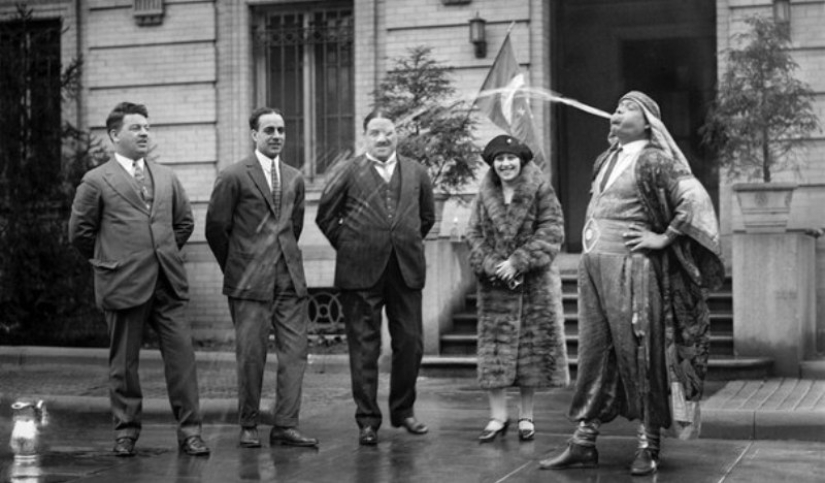
The Human Fountain Hadji Ali, also known as the "Egyptian Riddle" and "The Great Belcher", was born in Egypt in 1892. There is almost no information about his family and childhood. An Arab with unusual abilities appeared in Europe out of nowhere in 1920. It was the heyday of the freak show era, and Hadji Ali immediately became famous.
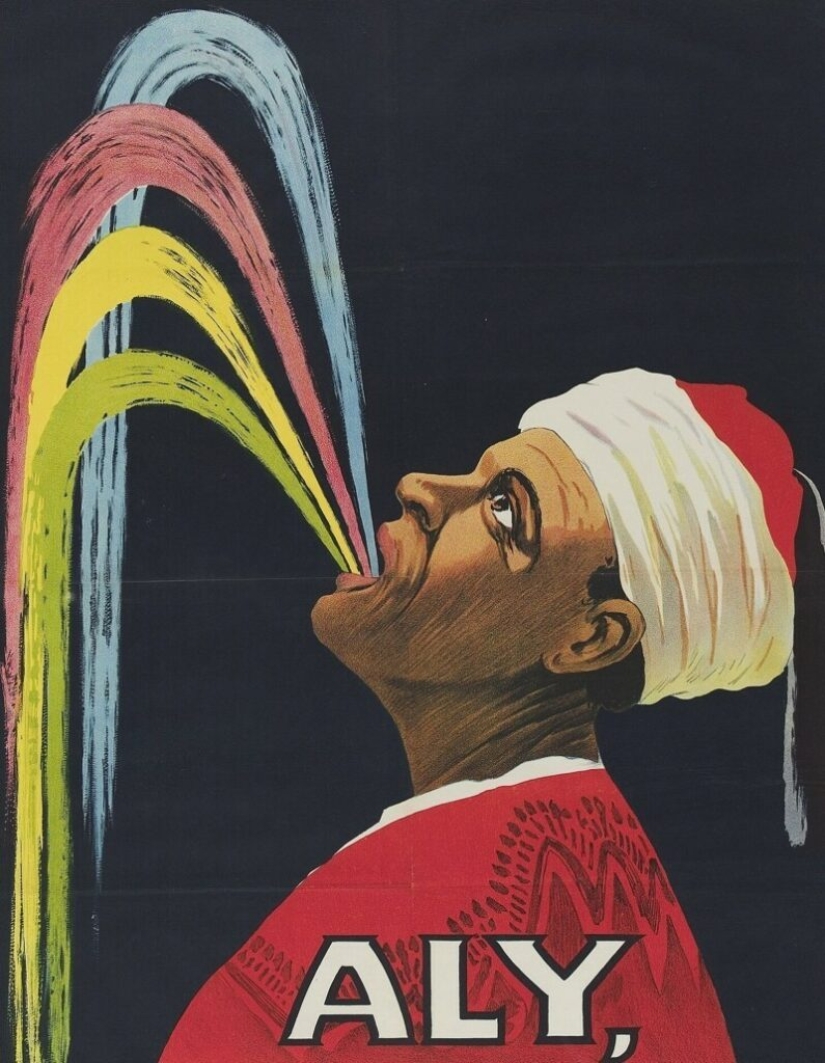
Hadji Ali performed in circuses and theaters, invariably attracting huge crowds of spectators. He amazed the audience with his amazing ability: he swallowed large volumes of liquids and then vomited them with a powerful force. It happened that the artist swallowed various objects, which he also managed to vomit out.
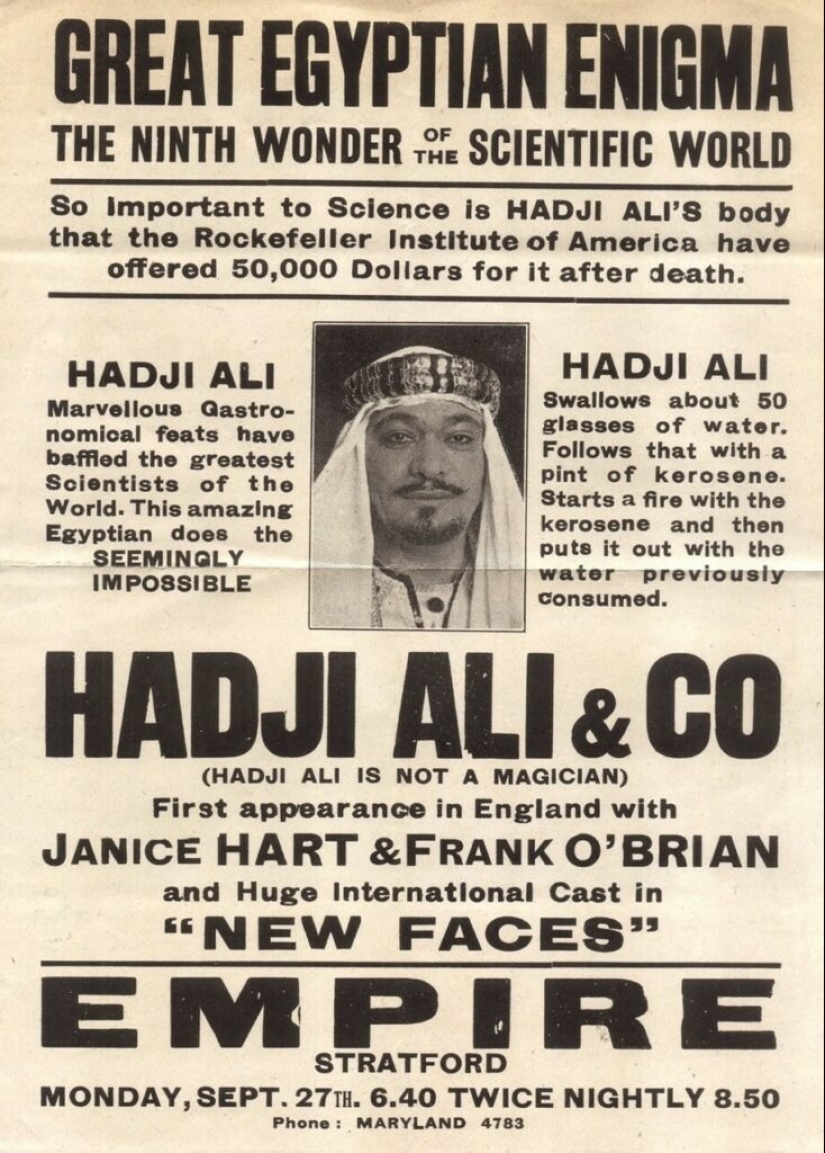
It is worth mentioning right away that Hadji Ali was not the pioneer of this strange genre. Back in the 17th century, the Frenchman Jean Royer performed at fairs, filling his stomach with water, which he then spat out in a powerful stream. Later, his fellow countryman Blaise Manfre improved the trick. He drank water, but vomited wine. Before going on stage, the cunning Frenchman drank an extract of caesalpinia, a legume from which red dye is made in South America. The substance colored the water in the stomach, and it became similar to wine.
But all this was child's play compared to the spectacular numbers of the gifted Egyptian. Hadji Ali drank a medium-sized aquarium on stage, cup after cup. Then he produced a tight stream two meters high and dropped it into a small basin. Sometimes before this, the "Great Belcher" swallowed several different objects, but this did not affect the pressure of the water. He could also drink different liquids and then vomit them in a certain sequence.
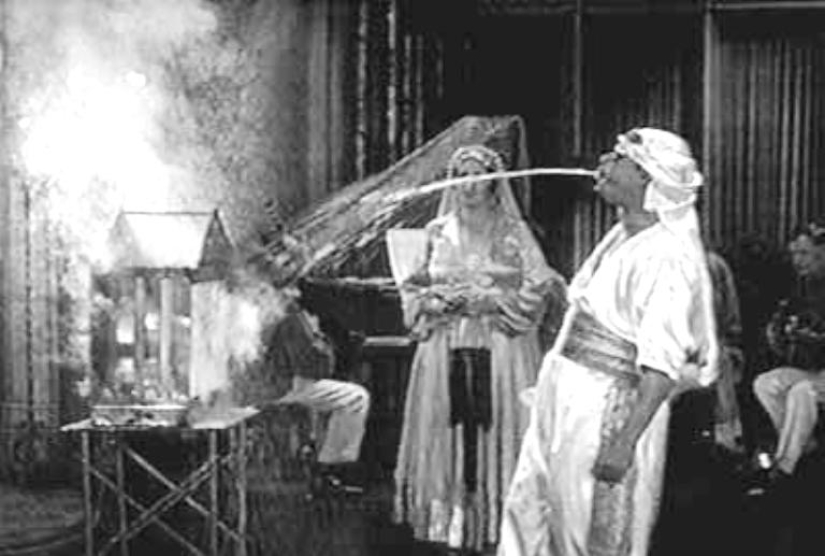
Hadji Ali's signature act was a stunt called "Fire in the Castle." First, an assistant on stage would assemble a small castle from metal parts. Then the human fountain would drink five liters of water and the same amount of kerosene. After that, he would direct a powerful stream of kerosene at the castle and set it on fire. A wave of fire would engulf the structure, and Ali would continue to keep the flames going, releasing fuel in portions. In the finale, he would extinguish the fire by spewing water from his stomach.
Hadji Ali performed such tricks 22 times a week, and they brought him a good income. At the same time, other "eruptors" traveled around Europe and America, but they were noticeably inferior to the Egyptian. After all, Ali was not just a master of his craft, but also a talented showman. He went on stage in a traditional burnous, used unusual dishes and assistants in oriental costumes, which added a special flavor to the performances.
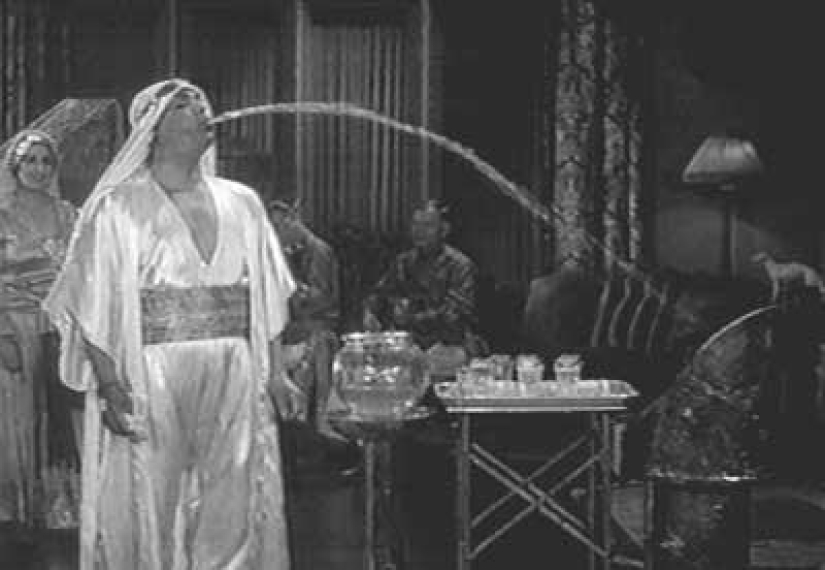
By the way, classical circus artists treated human fountains with obvious disgust. Self-respecting magicians and sorcerers did not participate in performances with them on principle. The great Houdini, for example, directly wrote about his negative attitude to such tricks in his book "Miracle Workers and Their Methods".
There was nothing supernatural about the act of regurgitation. It did not require any special abilities - many could develop such a skill by training the muscles of the throat and stomach. Some artists additionally used drugs that caused a gag reflex. All they had to do was press their lips tightly together so that the contents of the stomach did not burst out prematurely. However, the career of such performers was often short-lived: over time, they developed serious health problems.
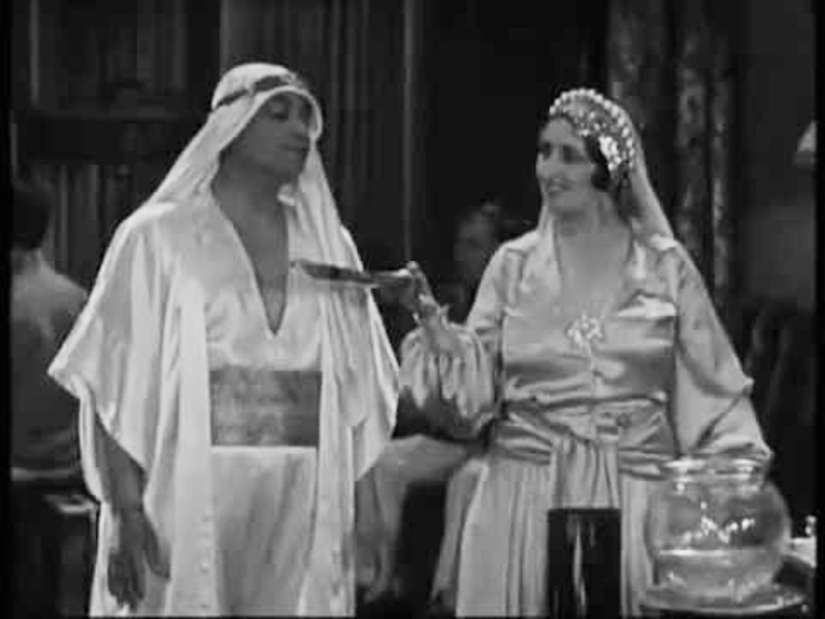
It is not difficult to assume that constant experiments with the body could not remain without consequences for the "Great Belcher". On November 5, 1937, during a tour in London, the human fountain Hadji Ali died suddenly, before reaching old age. He was only 45 years old. Despite his strong constitution, his life was cut short by acute heart failure.
The story of Haji Ali is an example of how even the most unusual and shocking talents could bring fame and money. Today, such performances would hardly be recognized, but the boundaries of what is acceptable in entertainment are constantly changing. Do you think there is a place for such shows now, or are they a thing of the past? Share your opinion in the comments!
Recent articles

When 19-year-old Marilyn Monroe started to pose for Earl Moran in 1946, she still dreamed of becoming an actress. Moran's already ...

These photos at first glance resemble a video about kissing strangers, but in fact the project was filmed long before that. One ...

The story of Henrietta Lacks is a rare case of an ordinary woman's life changing the face of global medicine. She led a quiet ...